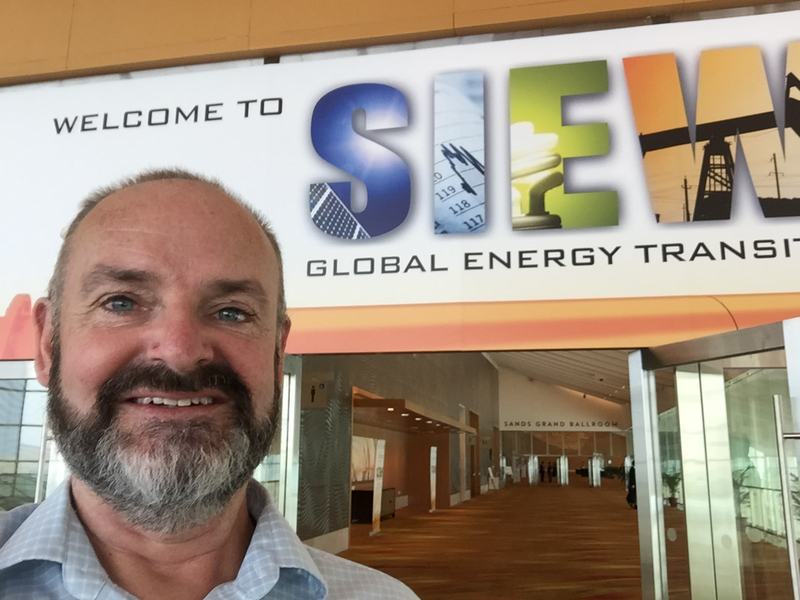When looking at the adoption of any technology, the starting point of the first units are of little relevance to what is to come – it’s when the diffusion curve actually gets curvy with significant market penetration that it starts to count. My graph below reveals that the start of the modern ‘renewables clock’ was arguably with wind in 2007, and the subset ‘solar clock’ doesn’t start until 2011. Disruptive impact can only be rationally measured after that point. And extending my forecasts to batteries, the storage clock will, in my view, start from 2016.

So starting the renewables clock in 2007 means the real impact cannot be witnessed in a 1990 – 2009 data set. Using a data set obtained from the U.S. Energy Information Administration (EIA) starting from 2007 through to the 2012 data, the most current complete set starts to be useful. It must be noted that my treatment is only an approximation of the IEA’s method. The “Global energy GDP Import v Export change” graph shows some richer energy importers doing something about making their own energy from renewables, but most exporters are still not pushing renewables policy.

The single year 2012 data, “Global energy GDP Import v Export share,” really highlights what is just a beginning of the surge in renewables investment by the lower GDP/capita importers – the surge of lower wealth nations is well reported by Bloomberg New Energy Finance and others, but the link to many of those countries also being energy poor is not.

And then there are the woeful projections of IEA that have been covered widely from October – somehow the IEA suggests renewable energy will be flat from 2015 to 2017, and only marginal growth going forward. My forecasts from 2012 for solar only projected to 2018, and in 2015 my 2013 and 2014 forecasts were 10% below actual.
That original 2012 forecast suggested 366 GW solar by then – my revised 2015 forecast suggests over 525 GW by 2018, and while the IEA thinks a total of 700 GW will be added by 2020, my forecast suggests that amount will be achieved by solar alone and, with wind, in excess of 1,100 GW. My forecast uses a basic assumption that cleantech is just tech, that cleantech is achieving rapid success, because of both regulation pushing markets, and public sentiment pushing both regulation and adoption, and will succeed as all other successful technology has succeeded in the past – but faster.
The incredibly modest forecast of growth in renewable by the IEA conflates policy decisions, inferring the world is not capable of adding renewable energy any faster than it has. No technology behaves that way – technology adoption accelerates as it penetrates a market, not decelerates. Policy decisions based on poor assumptions will not be conducive to being prepared for a rapid energy transition, and will likely cause poor investment decisions in fossil fuel generation.
If you fail to extrapolate, you will conclude the future is a long way off.
It’s not.
The taxi industry failed to anticipate Uber, the hotel industry is still trying to comprehend Airbnb, and the energy industry cannot believe they are suffering the same fate, particularly because they cannot contemplate the immediacy of the end of coal.
This is fundamental: a key thing that happens with a shift in any technology is the old technology doesn’t hang around, it exits the market.
And so to finish. A Hollywood quote seems apt for what is happening in energy: in The Matrix, Morpheus said on people still plugged into The Matrix, “You have to understand, most of these people are not ready to be unplugged. And many of them are so inured, so hopelessly dependent on the system, that they will fight to protect it.” I actually think we have reached a point – with the arrival of energy storage – that people are almost ready to unplug.
The views and opinions expressed in this article are the author’s own, and do not necessarily reflect those held by pv magazine.
This content is protected by copyright and may not be reused. If you want to cooperate with us and would like to reuse some of our content, please contact: editors@pv-magazine.com.








By submitting this form you agree to pv magazine using your data for the purposes of publishing your comment.
Your personal data will only be disclosed or otherwise transmitted to third parties for the purposes of spam filtering or if this is necessary for technical maintenance of the website. Any other transfer to third parties will not take place unless this is justified on the basis of applicable data protection regulations or if pv magazine is legally obliged to do so.
You may revoke this consent at any time with effect for the future, in which case your personal data will be deleted immediately. Otherwise, your data will be deleted if pv magazine has processed your request or the purpose of data storage is fulfilled.
Further information on data privacy can be found in our Data Protection Policy.